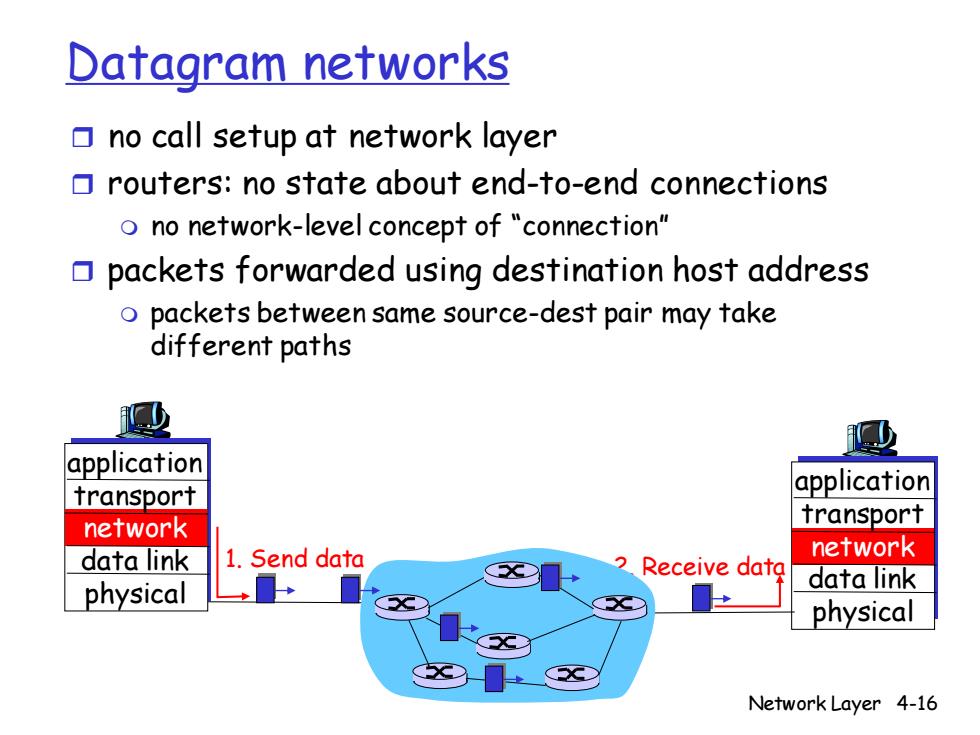
Datagram networks no call setup at network layer routers:no state about end-to-end connections o no network-level concept of "connection" packets forwarded using destination host address o packets between same source-dest pair may take different paths application fransport application network fransport data link 1.Send data network 2 Receive data data link physical physical Network Layer 4-16
Network Layer 4-16 Datagram networks no call setup at network layer routers: no state about end-to-end connections no network-level concept of “connection” packets forwarded using destination host address packets between same source-dest pair may take different paths application transport network data link physical application transport network data link physical 1. Send data 2. Receive data
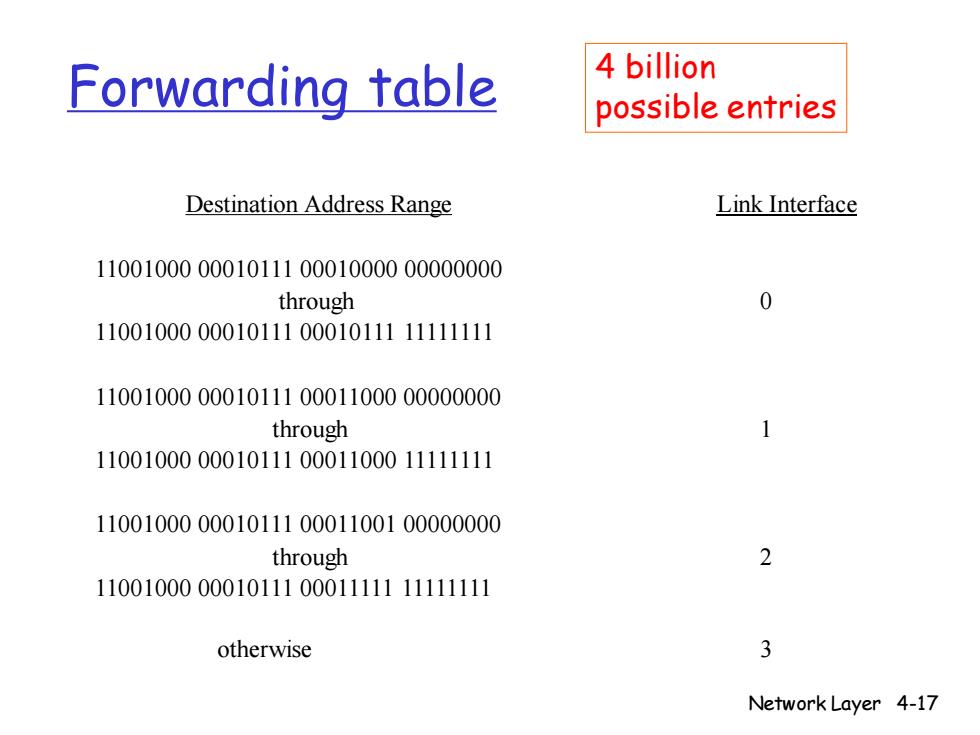
Forwarding table 4 billion possible entries Destination Address Range Link Interface 11001000000101110001000000000000 through 11001000000101110001011111111111 11001000000101110001100000000000 through 1 11001000000101110001100011111111 11001000000101110001100100000000 through 2 11001000000101110001111111111111 otherwise Network Layer 4-17
Network Layer 4-17 Forwarding table Destination Address Range Link Interface 11001000 00010111 00010000 00000000 through 0 11001000 00010111 00010111 11111111 11001000 00010111 00011000 00000000 through 1 11001000 00010111 00011000 11111111 11001000 00010111 00011001 00000000 through 2 11001000 00010111 00011111 11111111 otherwise 3 4 billion possible entries
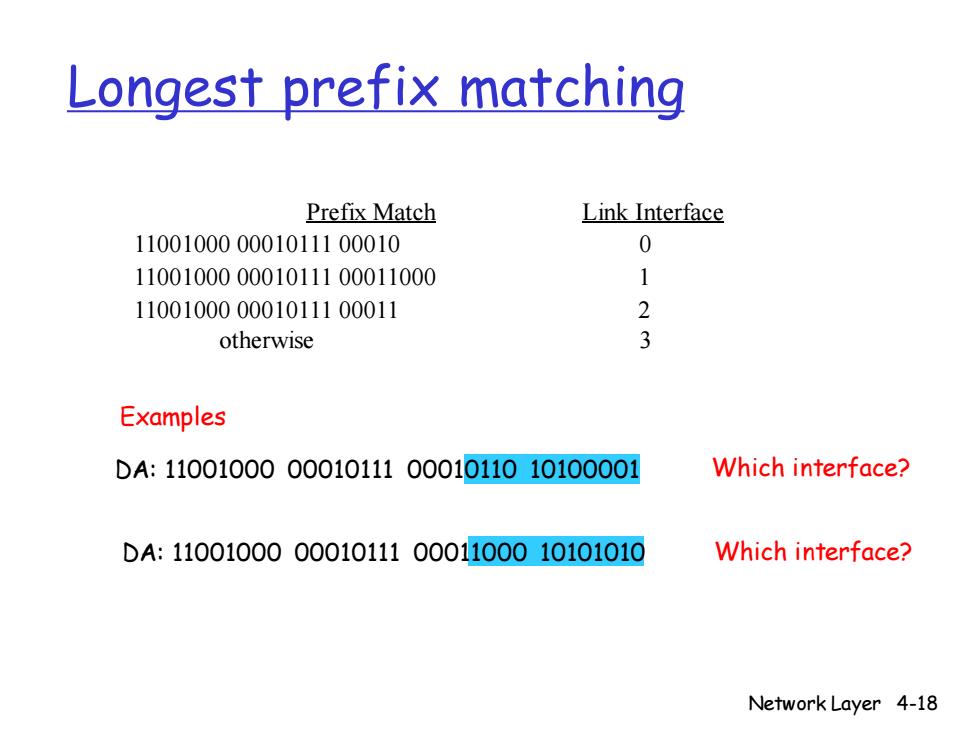
Longest prefix matching Prefix Match Link Interface 110010000001011100010 0 110010000001011100011000 1 110010000001011100011 2 otherwise 3 Examples DA:11001000000101110001011010100001 Which interface? DA:11001000000101110001100010101010 Which interface? Network Layer 4-18
Network Layer 4-18 Longest prefix matching Prefix Match Link Interface 11001000 00010111 00010 0 11001000 00010111 00011000 1 11001000 00010111 00011 2 otherwise 3 DA: 11001000 00010111 00011000 10101010 Examples DA: 11001000 00010111 00010110 10100001 Which interface? Which interface?
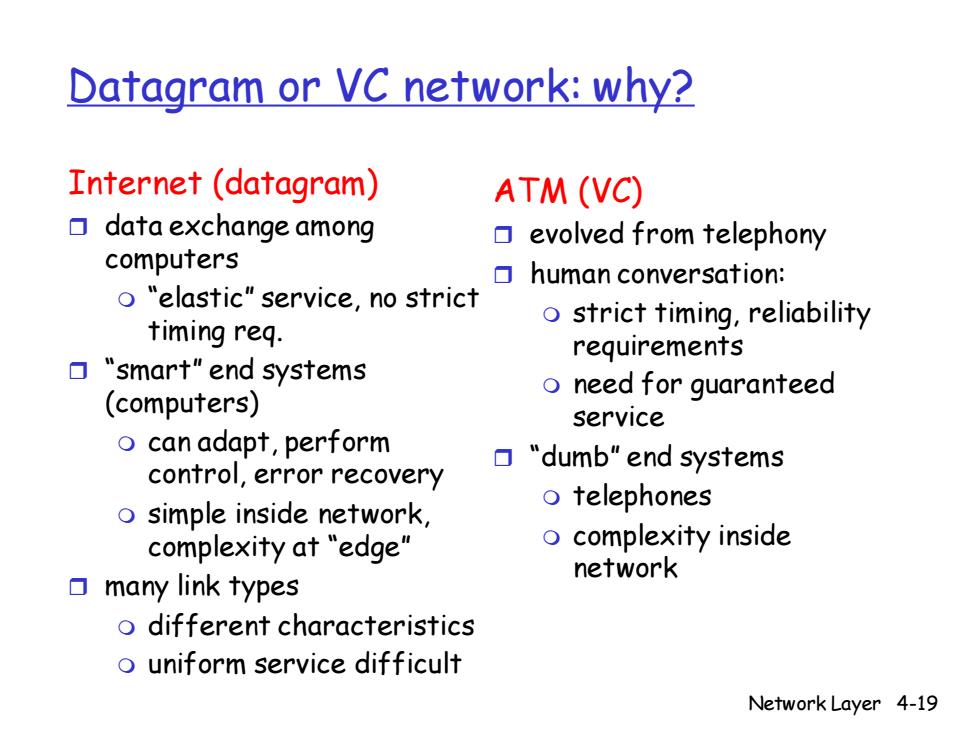
Datagram or VC network:why? Internet (datagram) ATM(VC) data exchange among evolved from telephony computers ▣human conversation: o "elastic"service,no strict timing req. o strict timing,reliability requirements "smart"end systems o need for guaranteed (computers) service o can adapt,perform control,error recovery "dumb"end systems o simple inside network, o telephones complexity at "edge" o complexity inside network many link types o different characteristics o uniform service difficult Network Layer 4-19
Network Layer 4-19 Datagram or VC network: why? Internet (datagram) data exchange among computers “elastic” service, no strict timing req. “smart” end systems (computers) can adapt, perform control, error recovery simple inside network, complexity at “edge” many link types different characteristics uniform service difficult ATM (VC) evolved from telephony human conversation: strict timing, reliability requirements need for guaranteed service “dumb” end systems telephones complexity inside network
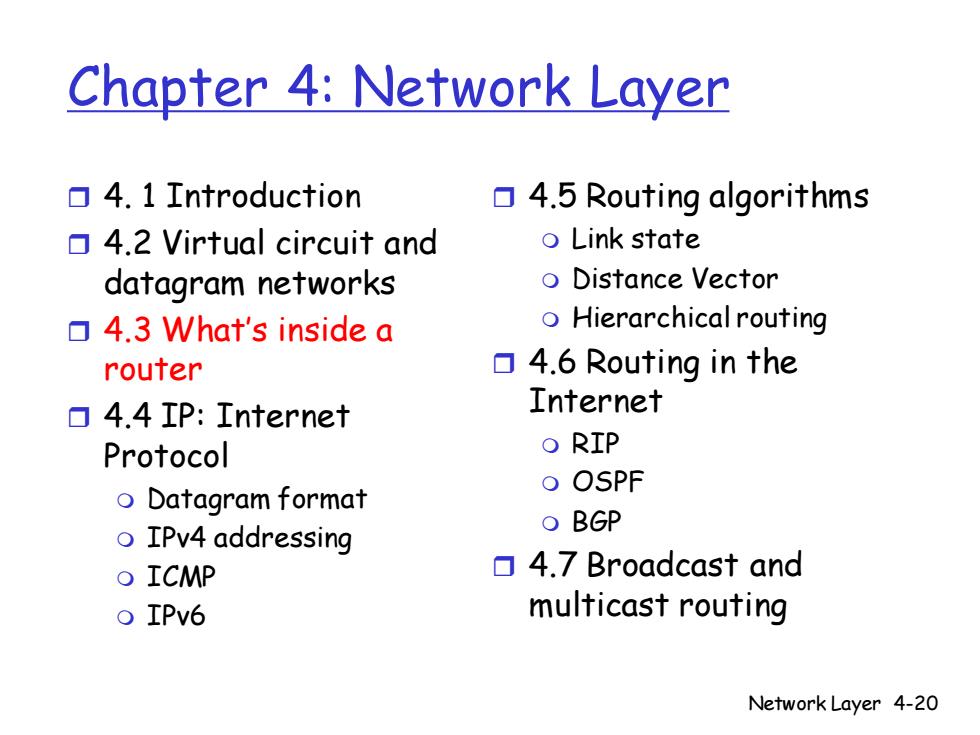
Chapter 4:Network Layer ▣4.1 Introduction 4.5 Routing algorithms 4.2 Virtual circuit and o Link state datagram networks o Distance Vector 4.3 What's inside a o Hierarchical routing router 4.6 Routing in the ▣4.4IP:Internet Internet Protocol o RIP o OSPF o Datagram format o IPv4 addressing oBGP o ICMP ▣4.7 Broadcast and o IPv6 multicast routing Network Layer 4-20
Network Layer 4-20 Chapter 4: Network Layer 4. 1 Introduction 4.2 Virtual circuit and datagram networks 4.3 What’s inside a router 4.4 IP: Internet Protocol Datagram format IPv4 addressing ICMP IPv6 4.5 Routing algorithms Link state Distance Vector Hierarchical routing 4.6 Routing in the Internet RIP OSPF BGP 4.7 Broadcast and multicast routing